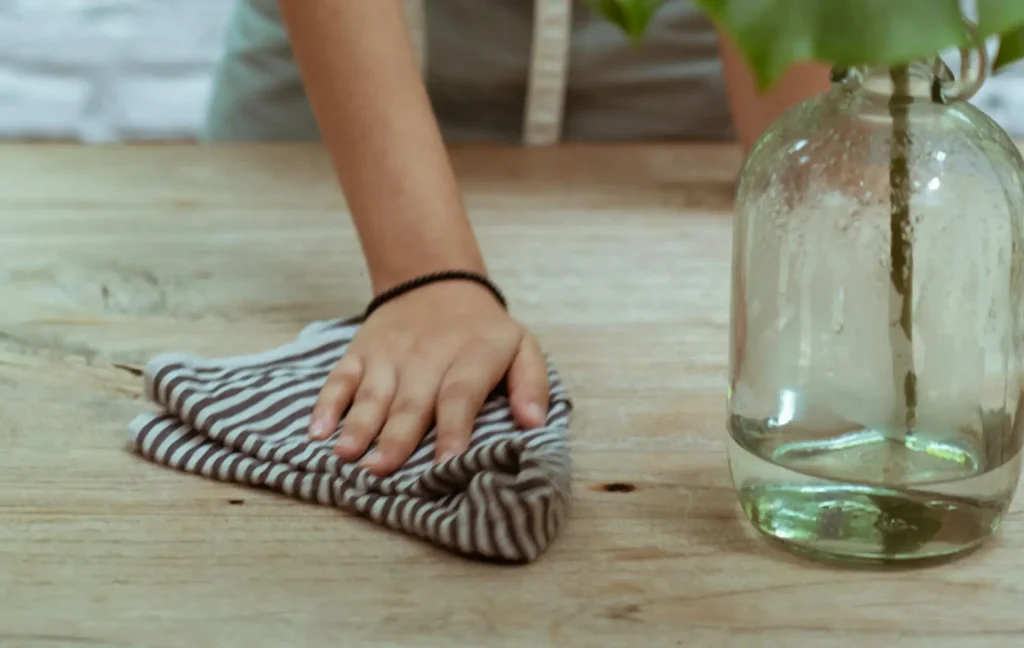Buy Furniture, Mango Furniture
How to Care for Mango Wood Furniture
The wood from a mango tree is known for its beauty. Ask anyone who is familiar with it as a material and it will no doubt be among the first things mentioned, along with its sustainability, versatility and durability.
All wood is a precious resource and should be more than just a one-off expenditure, it should be an investment. Like any timber, mango wood requires proper treatment and maintenance to ensure its longevity – but once you know how to care for mango wood furniture, you’ll have an item that will look exquisite for decades to come.
The natural colour variation in mango timber means that there may be slight differences in the products you use, depending on what it is about the grain you’d like to amplify: light mango wood furniture might require a more subtle varnish or coating, for example. But, regardless of the item’s particular hue, it’s easy once you know how to care for mango wood furniture.
Let’s take a look…
Mango Wood Furniture Care Guide: Rules to Remember
Here are some top tips from industrial furniture specialist Kai from Statement Furniture:
The range of shades a piece of mango wood can be is one of the instantly recognisable things about it. While this variety might change the types of products you use on your item, there are important things to remember about its treatment that apply to all pieces made from the material. Whether light or dark, mango wood furniture will last longer if you remember these rules.
Avoid leaving the item in places exposed to direct sunlight
Always use place mats and coasters
Apply wax or varnish to scratches and stains
Use dry or very slightly damp cloths to clean and dust
Clean any spillages immediately and thoroughly
Never use abrasive cleaning products or harsh chemicals
Avoid cleaning with cloths made of rough fabrics
Positioning
While it is certainly true that mango wood is a hardy and durable material, it is also prone to warping and fading over time if exposed to particular conditions. For this reason, where you place your item is an important part of learning how to care for mango wood furniture. Not all homes will be able to accommodate each of these points, but they’re worth bearing in mind.
Being sensitive to harsh light, mango wood furniture should be placed away from direct sunlight if at all possible. When your indoor space doesn’t allow for this, make sure to rotate the item regularly so that the impact of the sun is spread evenly. This bleaching effect will likely be more noticeable in dark mango wood furniture.
As well as being somewhat sensitive to exposure to direct natural light, mango wood furniture has a tendency to dry out if left next to a fireplace or radiator. Where possible, position your item away from direct sources of heat.
The third environmental factor to bear in mind is moisture. Condensation is a destructive force to most woods, as it can get inside the grain of the timber, where it becomes a breeding ground for pests and bacteria.
Preventatives
Unless the damage is particularly severe, most forms of wear and tear can be fixed or repaired easily enough, but most can be avoided altogether with the implementation of just a few simple steps.
Mango wood is a hardwood, but it is also extremely easy to work with, which means that it can get scratched and marked easier than some other hardwoods. Be careful with sharp objects and make sure never to use scourers or other scratchy materials for cleaning.
Given that the material is also somewhat susceptible to getting marked or warped from heat and moisture, the use of place mats and coasters is a must. Obviously, light mango wood furniture will be more prone to the visual signs of staining than darker items, but the other damaging effects are just as potent, regardless of colour.
A regular coating of oils and wax is a really good way of keeping your mango furniture looking new for as long as possible. This will help prevent the wood from drying out and cracking. First, apply one coat of mineral oil, followed by a layer of wax. A beeswax finish is perfect for the job: it will help preserve the wood and give the timber a pleasing, natural glow. The deeper tones of dark mango wood furniture will really come to life with the right product.
Cleaning
Like any horizontal surface, wooden furniture requires a regular wipe down in order to avoid a build up of dust. This ideally should be done weekly, but doing it more often if time allows would be no bad thing.
For dusting and most cleaning jobs, we recommend using a dry, soft cloth. If there are marks that require a damp cloth, make sure that it is only very slightly damp and that you dry the surface thoroughly, immediately afterwards. Heavy use of damp cloths can result in unwanted discolouration in the wood.
Repair
Once you’ve put your piece of furniture in the correct place and have taken the small steps to ensure its longevity, you can be pretty sure that it will stay looking great and standing firm for years to come. But accidents happen. Before calling a specialist, there are things you can do for less severe kinds of damage.
For minor scratches, sometimes a generous coating of oil and wax will be all you need. For slightly more obvious marks, try using a soft wax filler or furniture touch-up pen – often available in a range of colours to suit the wood. Deeper cuts might require either sanding and refinishing or being looked at by a professional.
If your item gets wet, dry it off as quickly and thoroughly as you can while being mindful of being too heavy-handed with the cloths you use to dry it with. Being too rough with the drying can result in scuff marks being left in the wood. As with scratches, severe water damage may require professional help.
Future-proof Furniture
When you see a piece of furniture that’s been around for a long time, handed down the generations, it’s not only the materials and the craft that is important. Any item that lasts does so because it has been looked after. Now that you know how to care for your mango wood furniture, there’s no reason at all why it won’t become an antique of tomorrow.

